The city of Bolzano lies in the heart of South Tyrol. It is the capital of South Tyrol, and a crossroads of Italian and Austrian cultures. Bolzano has had some form of human settlement since the prehistoric era and has seen influence from various ruling empires. Due to its location within the alps, it has served as a strategic city for controlling the region, evident from the large number of castles nestled in the mountains. One interesting fact is that three languages are spoken here: Italian, German, and Ladin. Ladin is originally a Vulgar Latin that is spoken in this part of Italy. Bolzano is considered the linguistic border between Italian speakers and Ladin and German speakers. In the South Tyrol only 20% of the people speak Italian. Also street signs are in both Italian and Austrian.
We entered Bolzano through the Waltherplatz, the city’s town square with its statue of Walther von der Bogelweide, a German minstrel. Located in the center of town, this is the main plaza. The square was built in 1808 under the Bavarian rule. On the southern corner of the square is the Duomo de Bolzano and in the center of the square is a beautiful fountain. in the middle of the piazza rises the great monument of the minstrel Walther von der Vogelweide (1170 – 1230), which was erected in 1889 by Heinrich Natter.

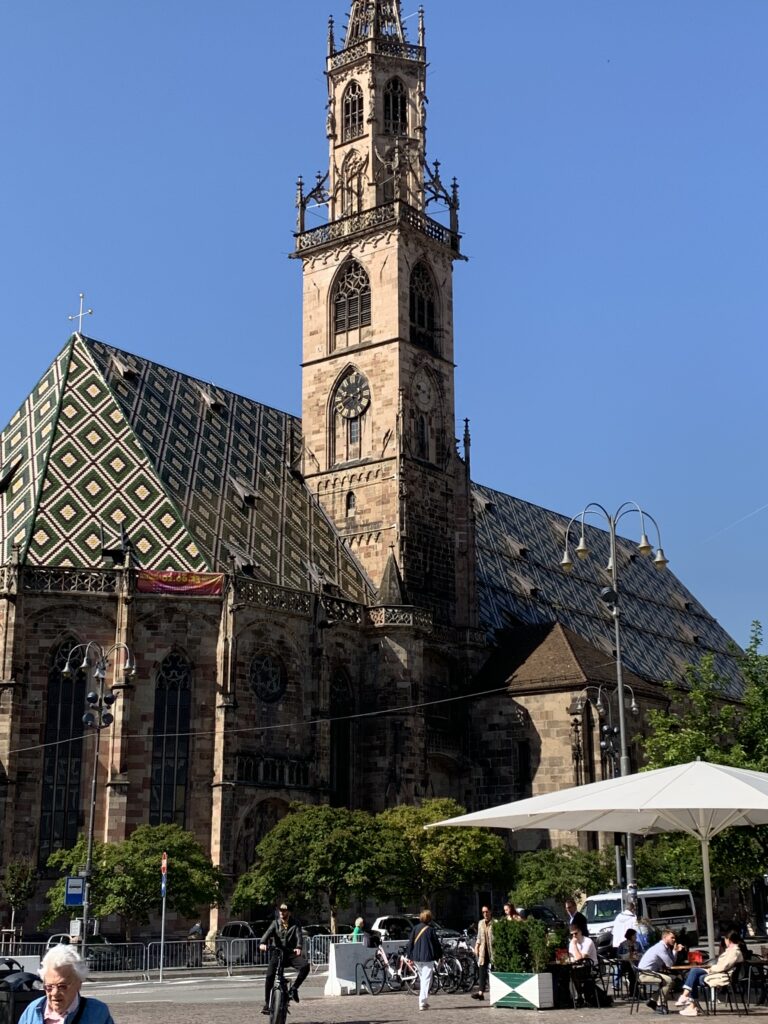
Completed in 1519, the Gothic-Romanesque cathedral of the Assumption of Our Lady is the largest Gothic church in South Tyrol. Its history dates to the 12th century when it was built as a Romanesque Basilica. Its striking bell tower, with an open fretwork spire in sandstone, stands 213 ft. tall, was built by the Suevian architect, Hans Lutz von Schusseried, between 1501 and 1519. The doors with carvings of the Adige River and Dolomite Mountains are beautiful . A notable feature of this Gothic building is the tiled roof that stands out against the surrounding buildings. Inside, the Gothic arches and altar are impressive as is the carved pulpit. The Gothic sandstone pulpit was created by Hans Lutz von Schussenried and the baroque altar in polychrome marble (1710-1720) by the Veronese Ranghieri and Allio.
There is also a museum that documents the history of the cathedral and holds some beautiful artifacts and relics.


On the way to the Museum of Archaeology, we wandered through the Piazza della Erbe. This is the Market Square and has been since 1277. In the center of the square is a famous Neptune Fountain.

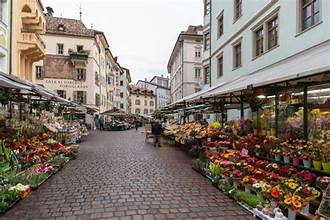
Our next stop was the Museum of Archaeology, home to Europe’s oldest natural human mummy: Otzi the Iceman. Otzi was discovered in 1991 and is the oldest human body ever found. It was so interesting to learn about and see him.
From the museum we went to the Victory Monument built by Mussolini. The monument was unveiled in 1928, on the site of an Austrian war memorial. The marble monument’s soaring columns, Latin inscriptions, and sculptures of Italian patriots were designed to glorify the triumph of Italy over the South Tyrol region. The monument has contributed to tensions between the German and Italian residents of the area.

After lunch in a local restaurant, Paulaner Stuben, complete with Tyrol dancing, we had time to explore on our own.. Many of the buildings had frescos dating from the 12th century. Via del Portici dates from the 13th century . It was the first street to run through the city.
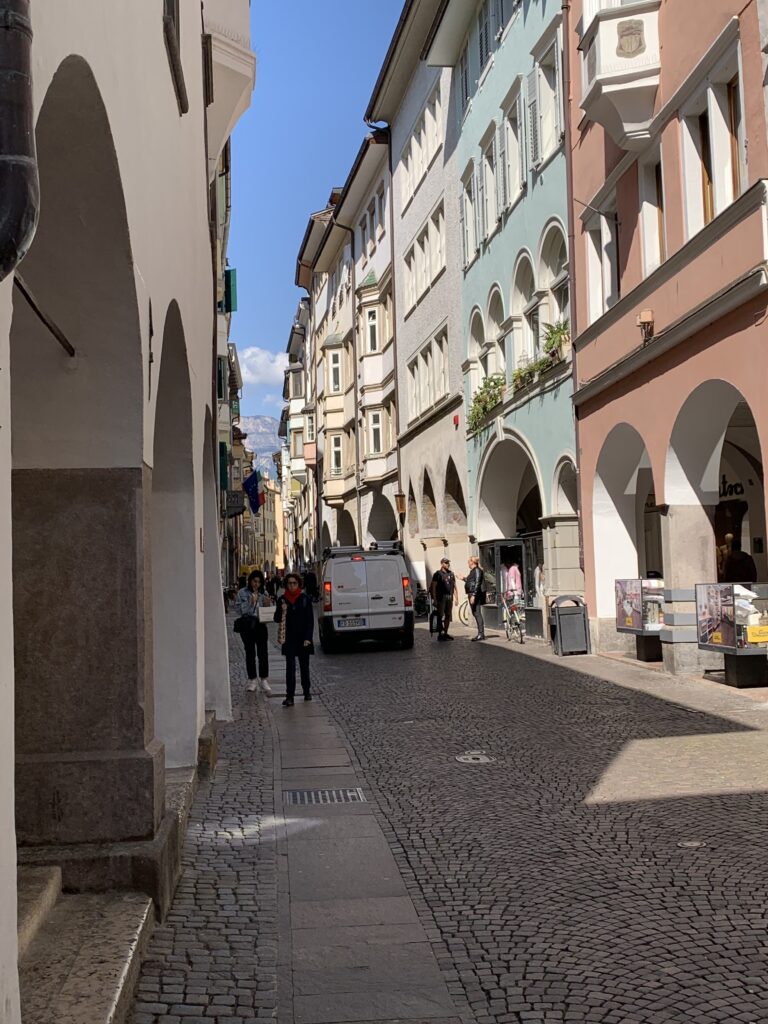
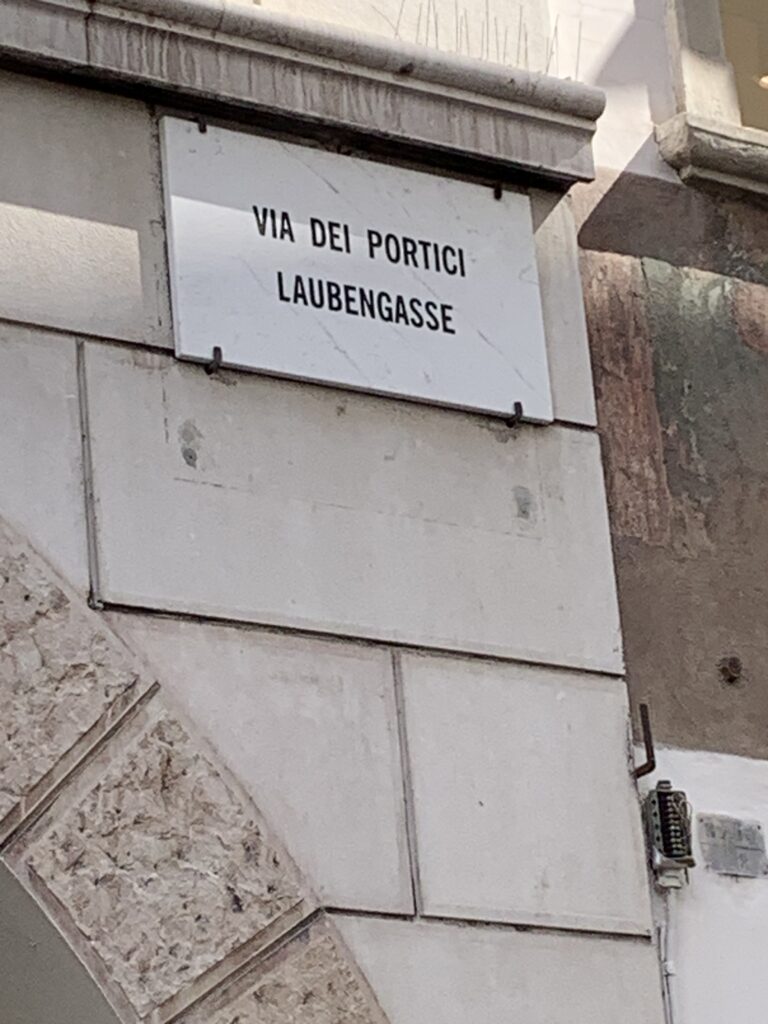

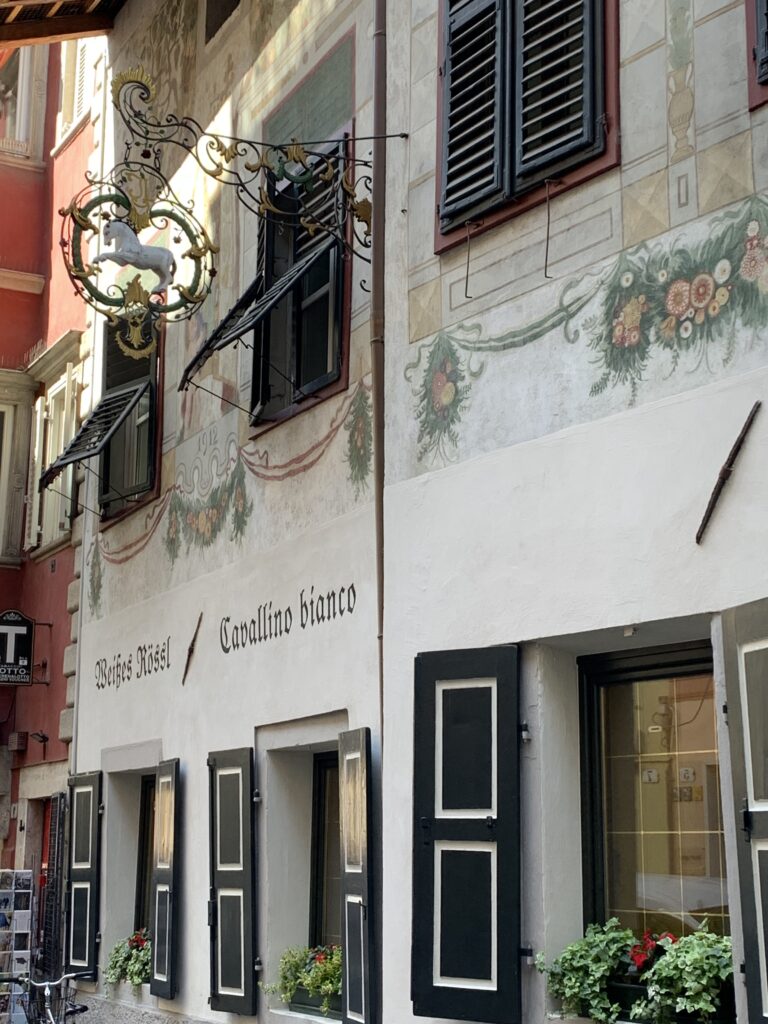
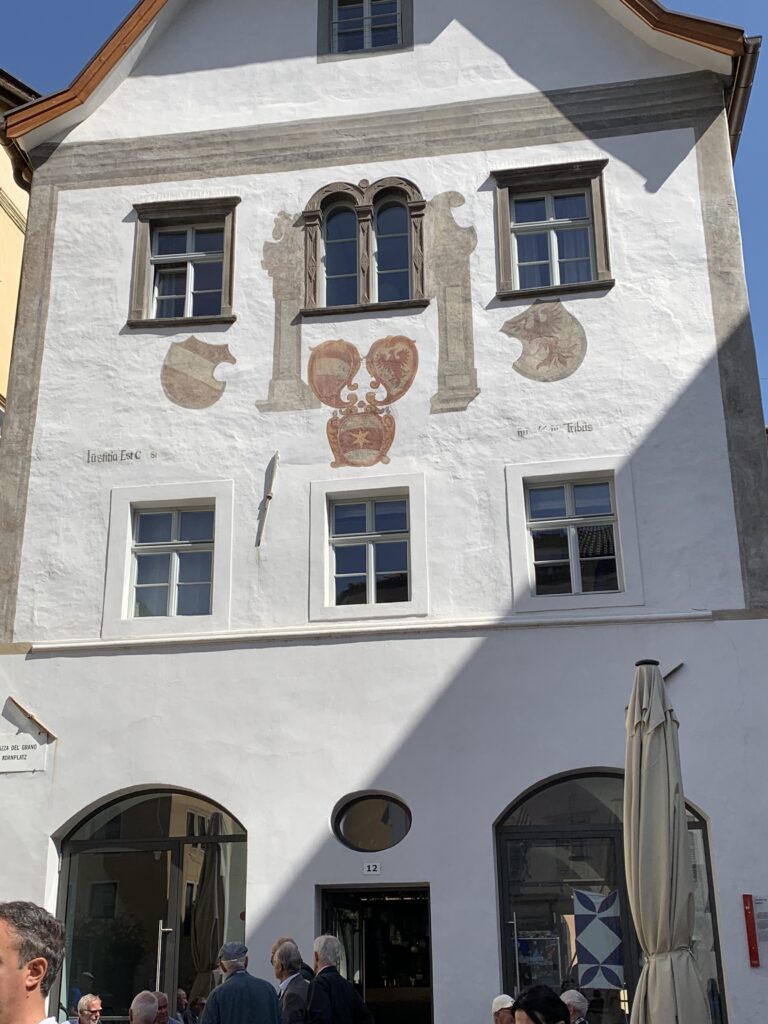

Leaving town we were able to see the Castle Firmiano the hills. Located at the southern-western outskirts of Bolzano this castle is considered one of the emblems of South Tyrol. During the second half of the 15th century Duke Sigismond , Count of Tirol, bought it and transformed it into the biggest and most prestigious of his castles naming it Sigmundskron (Sigismonds’ crown). It has become the Messner Mountain Museum.
The castle was noted as early as 945 CE and called “Formicaria”. In 1027 the German Emperor gave the castle to the Dukedom of Trento and the County of Bolzano. The castle became the Bishop of Trento’s property . In the 12th and 13th century it became necessary to extend the castle. In 1473 the castle changed hands and became the property of Sigmund der Münzreiche, Regent of Tyrol. The castle fell into disrepair. In 1957 Firmiano Castle was the location of an important event in South Tyrol: the demonstration against Italianisation (away from Trento), and against the violation of the “Treaty of Paris”.
Since 2006 Firmiano Castle has been housing the MMM Firmian.
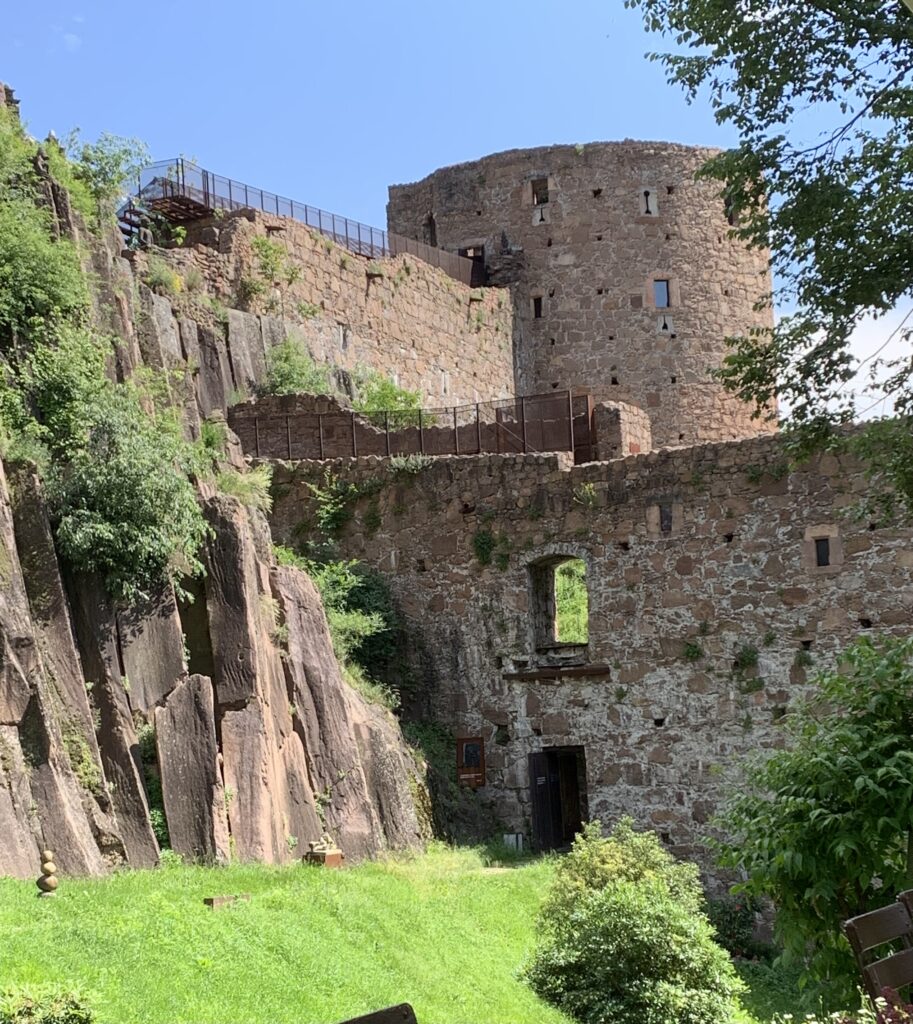
Leave a Reply